Prepping with Children Checklist
This post may contain affiliate links. We may earn a commission if you purchase via our links. See the disclosure page for more info.
It’s never too early to start prepping, and if you have children, it’s even more important that you prepare for disasters or emergencies. Whether you have small children or school-aged children, this prepping with children checklist is sure to get you headed in the right direction!
Prepping with Children
When prepping for a child, you’ll mostly prep the same items that you would for any adult in your house, with a few tweaks. I would recommend having enough food and water for at least 2-months stocked in your home pantry, basement, or other convenient storage areas.
Here’s Your Prepping with Children Checklist:
- Food: Although small children can eat the same foods you can, for the most part, it’s important to stock foods for picky eaters. Include snacks for your child to eat throughout the day. Having them feel more full, and enjoying treats/snacks, will also reduce some stress they would be experiencing due to the emergency.
- Pediasure: If your child is a picky eater, you’ll want to supplement any nutritional deficiencies. Most kids love chocolate milk, and chocolate Pediasure tastes just like chocolate milk, but includes protein, vitamins, and minerals your child needs.
- Water: Store at least one gallon per person per day as suggested by the American Red Cross. Consider storing at least a two-week supply of water for each member of your family. I’ve always recommended you target four gallons per person per day so you can hydrate properly, do some cooking, and also perform minimal personal hygene, like a sponge bath.
- Pedialyte: Water keeps your child hydrated, but if they are vomiting or having diarrhea, they will need electrolytes, too. Pedialyte powder sticks can easily be added to your child’s water to help them get through the sickness period.
- Children’s medications: Children can’t take adult doses of over the counter medications, so it’s important to have children’s versions of medications like Tylenol, Ibuprofen, Multivitamins, cough syrup, Peptobismol, and Benadryl stocked up in your prepper stash.
- Suckers: If you need to keep your child quiet and feel they are old enough to safely use them, suckers can keep them occupied and quiet for about 20-30 minutes.
- Toothpaste: Although your child is able to use adult toothpaste, it’s not recommended until age 6. If you have small children, make sure you stock up on toothpaste that is age appropriate.
- Soap and shampoo: I recommend stocking up on baby shampoo. If you don’t have running water, it can be tricky to get soap out of a child’s eyes.
- Measuring Droppers, Syringes: It is almost impossible to get the correct dosage of liquid medications without these items. You don’t want to be guessing when it comes to the proper dosage for the little ones.
If you have an infant, see my Emergency Preparedness for Infants for more information.
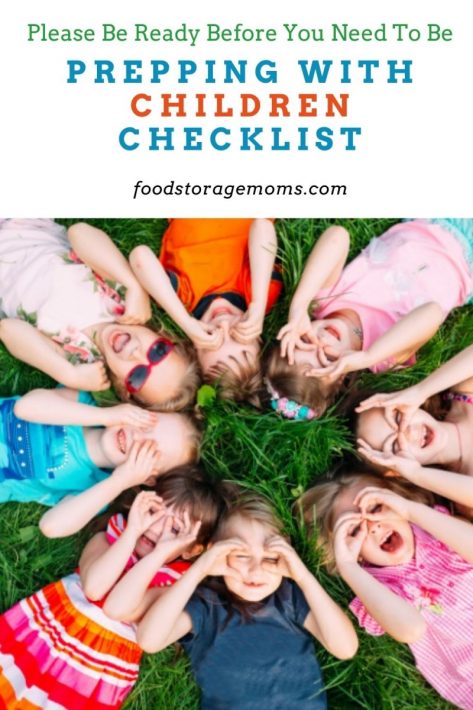
Bugging Out With Children
I don’t recommend bugging out unless you absolutely have to, but that doesn’t mean you shouldn’t be prepared to bug out. Additionally, when bugging out, try to make it no further than 3-days away. Check out my Comprehensive Bug Out Bag Checklists for both adults and children.
Here’s Your Child Bug Out Bag Checklist:
- Family pictures: Write names, phone numbers, email address, and home address on the back of pictures in case children get separated from you.
- Water: Pack enough water for each child for 3-days.
- Food: You’ll need 3-days worth of food for each child. The best bug out meals are MRE’s (Meals Ready to Eat). Additionally, pack freeze dried fruits, veggies, and yogurt bites, as well as long-shelf life snacks like crackers.
- Juice boxes: Sometimes a child just won’t drink water. Make sure you have drinks they will enjoy to stay hydrated.
- Activities: Your kids will get bored on a long trip. Be sure to pack things to keep them entertained, like reading books, coloring books and crayons, paper, tablets, puzzles, games, or play dough.
- Medications: OTC medications like Tylenol, Ibuprofen, and cough syrup are good to have, in addition to regular prescription medications they need to take.
- Pillow and blanket: Not only does this help children sleep while on the road, but if your car were to break down on the trip, they have something to keep them warm. Children always like things they are used to to help comfort them and their favorite blanket often fills that need.
- Hand sanitizer: You may not be able to stop anywhere with running water. Keep hand sanitizer in your child’s bag to easily clean their hands. The good thing is, they should already be used to using it based on events over the past couple of years.
- First aid kit: Pack a first aid kit in your child’s bag, and possibly your bag too. Make sure you have bandaids, gauze, antibiotic ointment, and other simple first aid supplies.
- Extra clothing: Bring 3-days worth of clothing. Sweat suits are great because you can easily cut the sleeves and legs off if it’s hot, or have your child wear them as is if it’s cold.
- Masks: Get child-sized N95 masks, and practice wearing them beforehand.
- Ways to keep them warm: Make sure you have extra blankets, coats, snow pants, and ways to keep your child warm in the event that you lose heat in the car while traveling, or when you get to your destination. You never know what might be ahead when you leave home.
Have an Away From Home Emergency Plan
In addition to having supplies prepped and stocked, if you have school-aged children, it’s important to have an away from the home emergency plan. Most kids spend about 30-hours per week in school, so there’s a good chance that if a disaster strikes, your kids will be at school when it happens.
Unfortunately, schools are usually inadequately prepared for disasters, so you’ll want your child to have what they need to be safe. Here are some things you can do to be best prepared:
Know the School’s Emergency Policies
Find out from your child’s school what they do during different emergency situations. Will they be evacuated, and if so, where will they go? Know when are you allowed to pick your child up, etc. Knowing all this information ahead of time will save you time, allowing you to get to your child quicker.
Get Contact Information
If it is at all possible, get contact information for each of your children’s teachers. If a disaster or emergency happens, every parent in the school is going to start calling the mainline. It will be much more efficient if you are able to contact the teacher directly. If that isn’t an option, it might pay to get your child an inexpensive cell phone so consistent communication/conversation can take place with you as their parent.
If cell service is offline, some families have found that Walkie Talkies are a good option. You for sure need to perform some “how-to” training so they are ready to go if needed. Having backup batteries is also essential.
Keep a Bug Out Bag at School
It may seem like overkill, but a School Emergency Kit in your kid’s locker could save their lives. You don’t have to have a complete comprehensive bug-out bag, but a few core emergency items like snacks, a flashlight, mini first aid kit, water, boots, and cash can all be easily kept in a small bookbag at school.
Have a Plan
During emergencies, cell phones can fail. This means that it is crucial to have a plan before disaster strikes. Talk with your children about meeting points, what to do if they can’t get in contact with a parent, and make sure your child has a hard copy of all contact information including names, phone numbers, and addresses so they can reach out to other family members or trusted neighbors. We tend to assume we’ll be available when emergencies happen, but parents sometimes getaway trips. The kids who are old enough to take on some responsibilities can pass in info to school administrators, babysitters, and others.
More Preps You Need for Families
In addition to what you need specifically for your child, you will also want to make sure that you have prepared your whole household for a disaster or emergency. Check out some of my other posts to find out how to be better prepared for anything in your home!
- Prepping for Beginners: A Guide to Get You Started
- Essential Items Every Household Needs
- 35 OTC Medications You Should Stock
- What You Need in Your Food Pantry
- Water: Do You Have Enough Stored
Final Word
Children are the most vulnerable during a disaster or emergency. Their survival is dependent on the adults in their lives. Be sure you are prepping and stocking everything your child eats, drinks, and needs during a typical day. Keep your stocked items separate from what you use on a daily basis, but be sure to rotate supplies. Being prepared with everything your child needs is the best way to keep our children safe during an emergency.
What other things have you stocked for your children in the event of an emergency? Let me know in the comments below! May God Bless this world, Linda
Copyright Images: Children Laying On Green Grass AdobeStock_303203082 by davit85



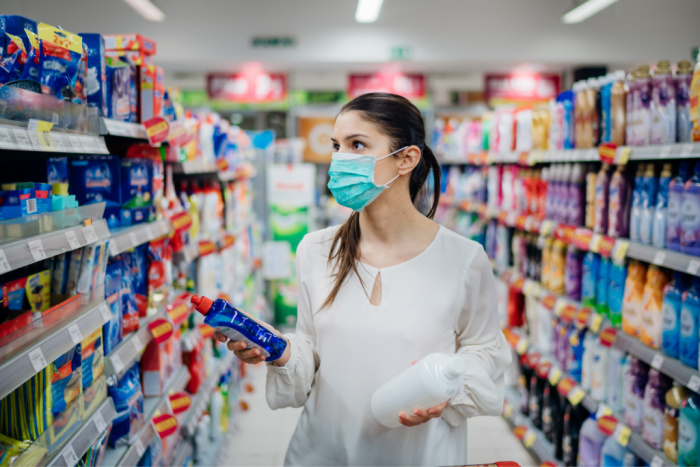
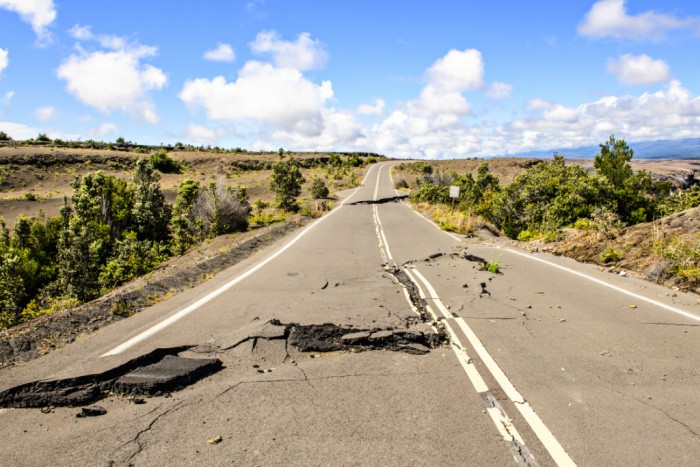
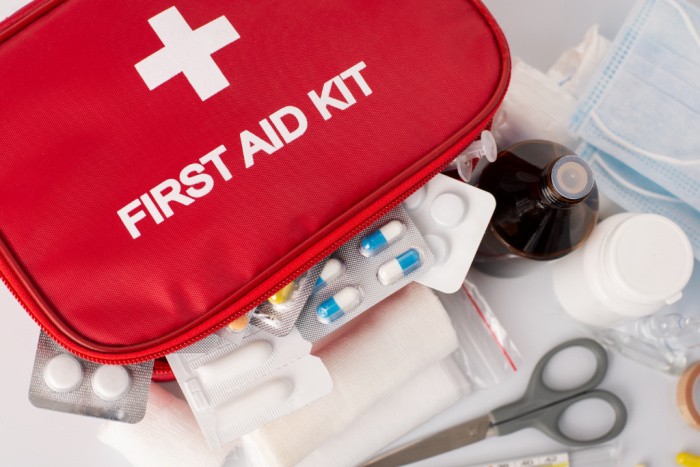

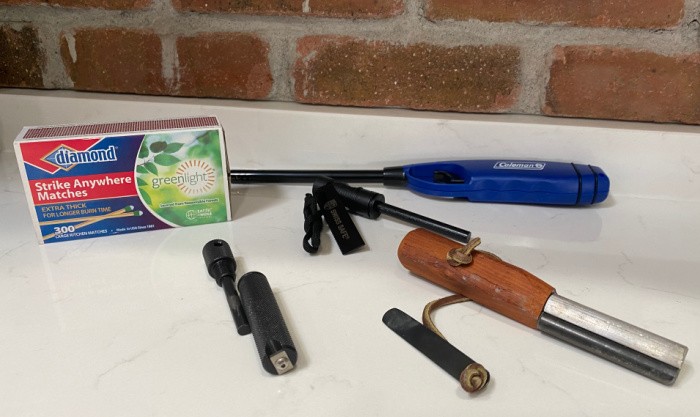
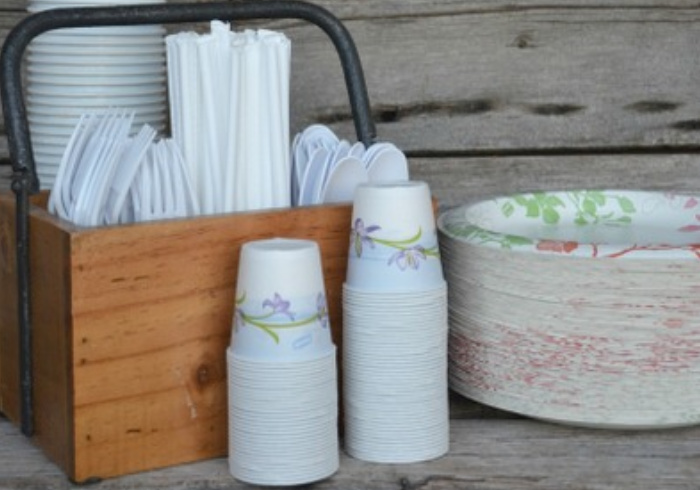

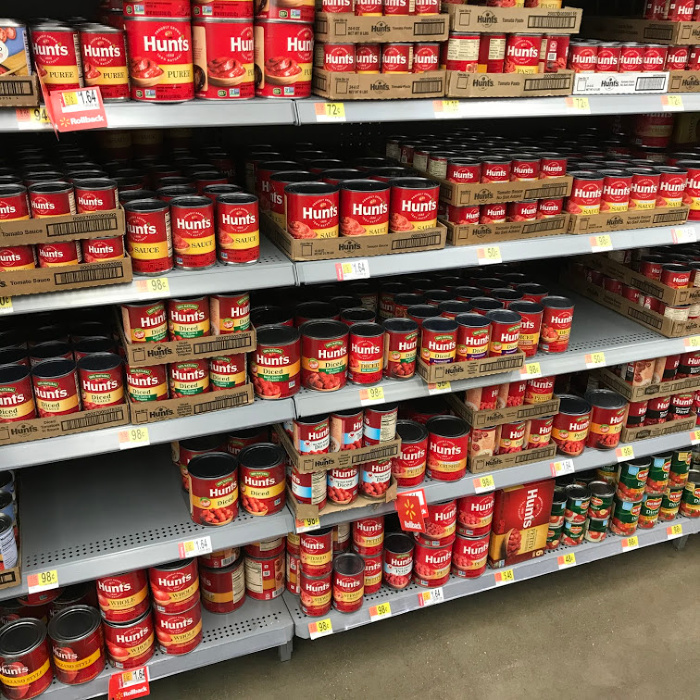


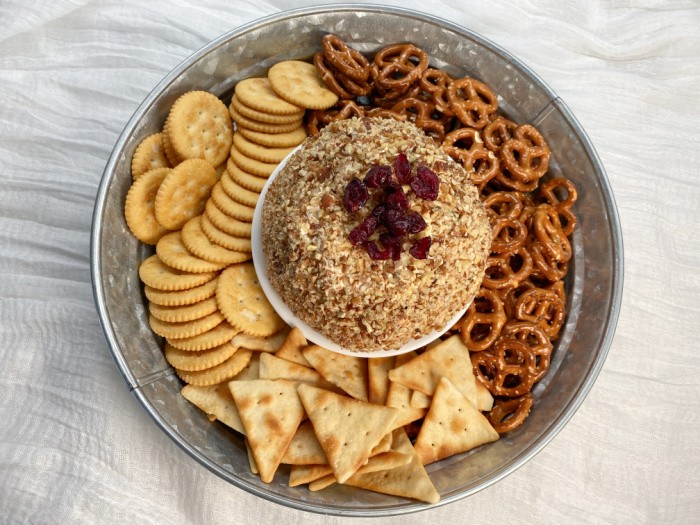
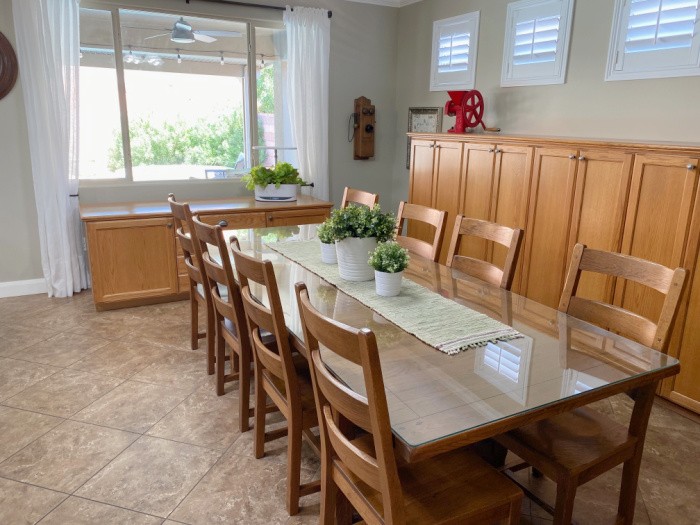

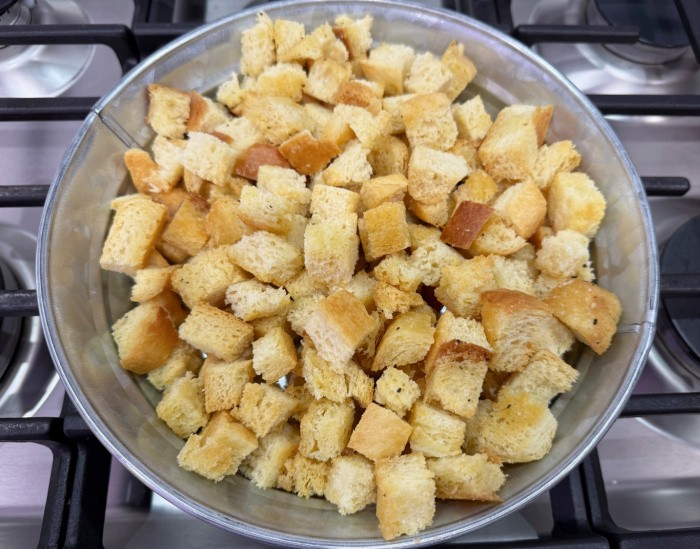
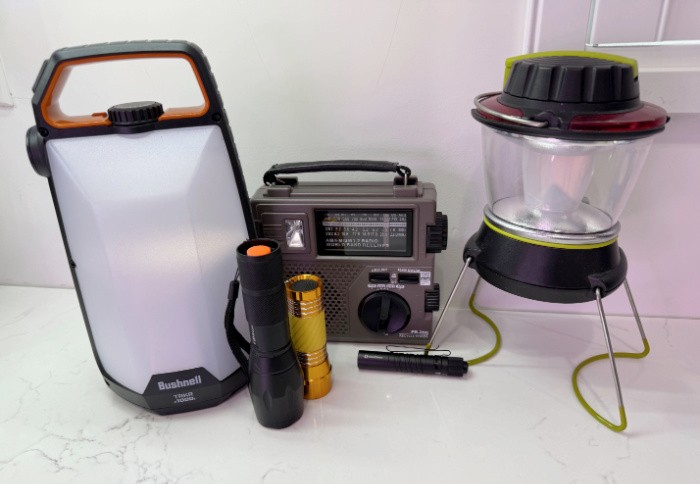
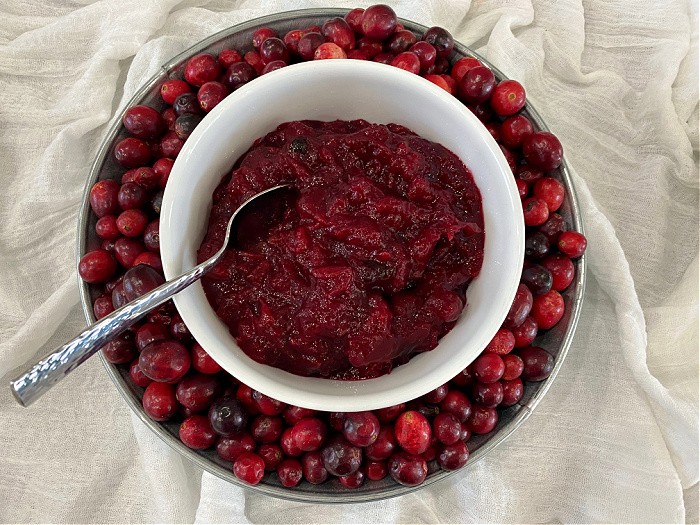
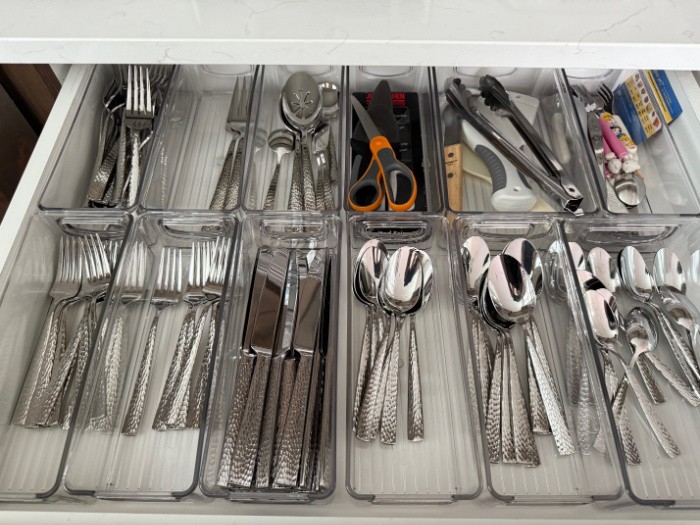


I have 2 grown kids and a 13 yr still at home . With all my kids I taught them a emergency get out of school in emergency and a hidding place where I could pick them up. My kids were taught what the difference between a bug out emergency was and non emergency that would get there butt busted if they left school. They had a bug out things in there backpack. Never ever had to use it with my other 2 boys, but I will say I have one son left and I pray every day he will not have to use our emergency leave school either. We do live in a very small school so small it’s in the woods with no other businesses so that is a plus. But you can never be to careful with your kids
Hi Renee, you are so right, you are lucky it’s a small school. I remember years ago putting “emergency baggies” together for all of my grandchildren at the time. They would put them in their backpacks. I never thought they would need them but I’m a grandma so I wanted them somewhat prepared for a day if something happened. I had to keep them “light” because they still had to carry books. The last few years, especially right now would be the scariest time for me to send kids to schools (very far from my home). Yes, I know they need the interaction, seeing faces is critical, etc. I graduated from high school in 1968 and we had riots between different races the last two years. Every single day. The Police and National Guard walked our halls. I lived in Las Vegas, NV. I never thought our kids and grandkids would still have to be dealing with what’s going on right now. We need to pray for our world, Linda
Hi Linda. I’ve always been curious about MRE’s so I checked out your MRE link. Do you know what “Guaranteed inspection date of 11/2022” means? Couldn’t figure that one out. Thanks!
Hi Kay, it’s my understanding the “Guaranteed inspection date” is three years after they are packed. I do not buy them because the shelf life is so short. BUT, I understand they still feed them to our soldiers. Let’s see if someone knows if they ate expired ones. Linda
I get video’s from a lady who tries different recipes and things. She had tried a 22 year old MRE and mainly things were still good. This one had crackers and they were a little harder but still tasted good. The only thing
that she didn’t eat was the pineapple, it was a really brown but the other things were all good. The drink mixes
tasted really good. The main dish still tasted good too. I would say Matt could probably answer any questions you
have about them. I have some MRE’s on hand too.
Hi June, I was thinking the same thing about Matt!! How funny! I tried so many ready-made meals when I started my food storage journey. I tried some Mountain House ones with a 5-year shelf-life. They would be good for bug-out bags, camping, or hiking. We have to try many before we really know what works for us. I decided meals did not work for me. It’s a personal thing. Linda